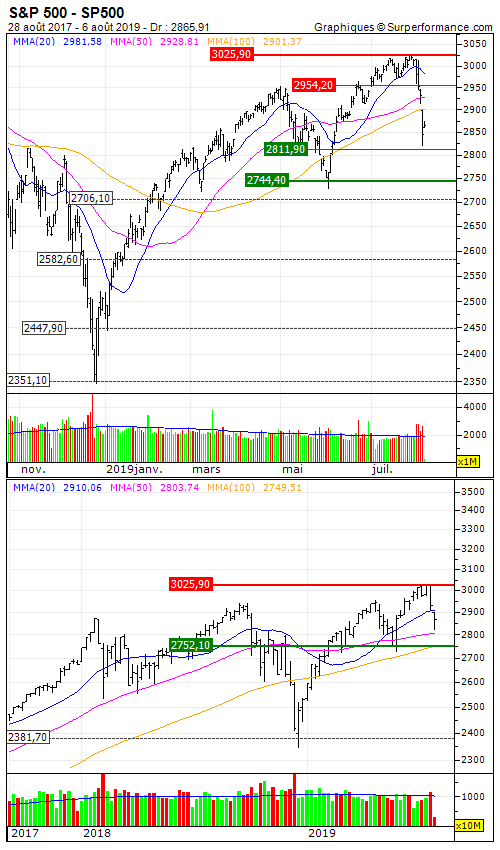S&P 500 : Change of polarity
By Patrick Rejaunier
The explanation for such a movement stems from Trump's new intentions to tax other Chinese products, Beijing having responded in its own way by shifting its currency. The economic war is intensifying. Markets do not appreciate it, hence the strong index dropouts.
Over the course of the week, Wall-Street's major index fell by 6.5%, a significant gap that comes after the FED, which was nevertheless intended to be reassuring in managing the slowdown in US growth.
Despite the powerful wave of decline, a number of stocks are still performing a bullish run over the same reference period.
This is the case of Martin Marietta Materials (2nd largest American aggregates producer), which increased by 9.8%, Kellogg (+8%), Amgen (+7%) and D.R. Horton (+4.4%). Indeed, the two sectors of real estate and biopharmaceuticals have the highest scores over the 5 rolling days.
Technically in daily data, like a stone, prices have fallen by 200 points since the upper limit of 3025 points. In a few sessions, the S&P500 came close to a support zone of 2810 points. A rebound is attempting to form on this basis but downward pressure may return at any time to counter the secondary recovery movement, with a downward target close to 2750 points. It will be difficult to get past the 2920 points, the high point of the recent bearish gap. A rapid return on 2960 points (in the form of a V-Bottom) would be required to offset the decline, but there is little chance of this scenario happening in the short term.


 S&P 500
S&P 500 








